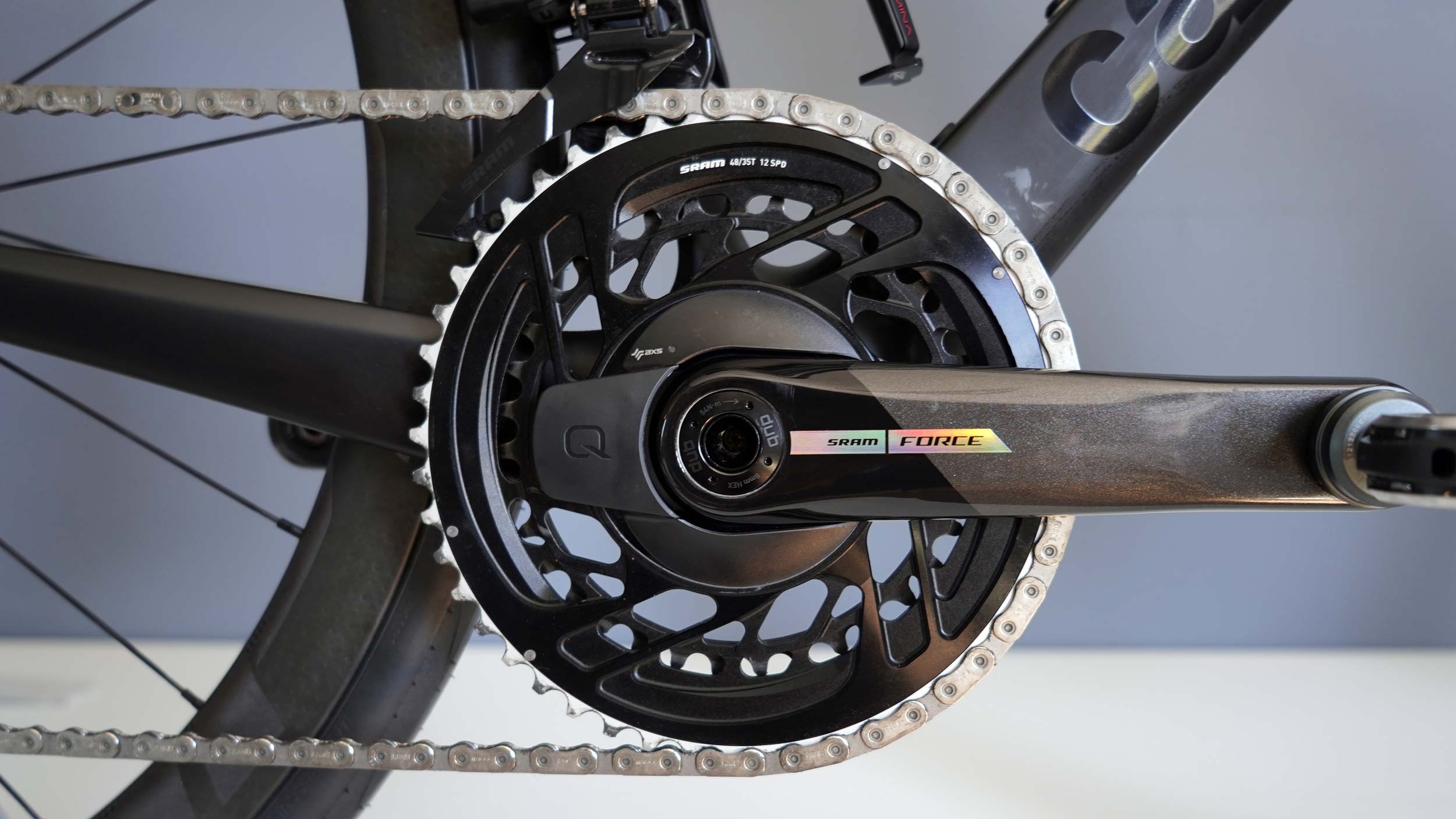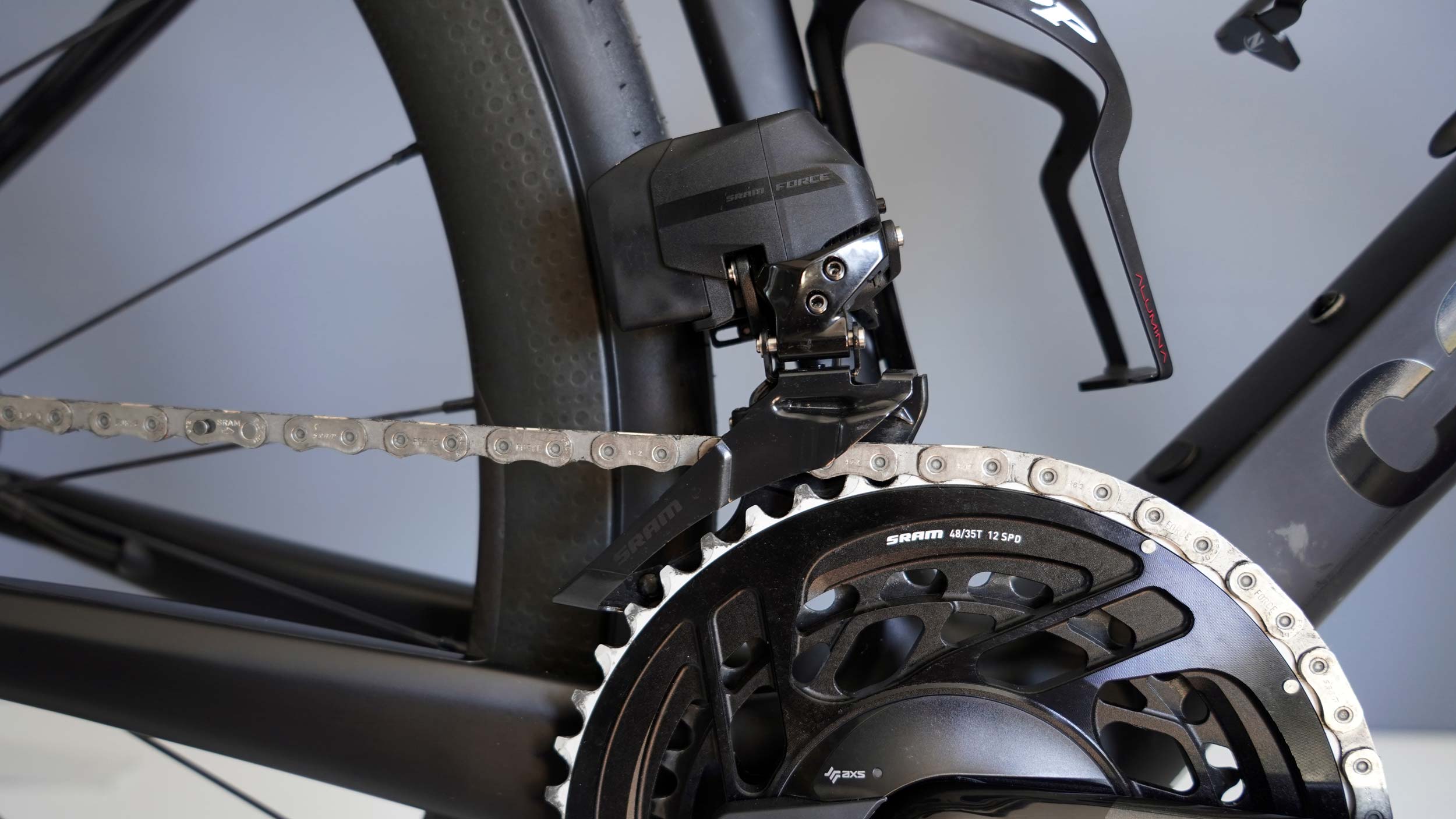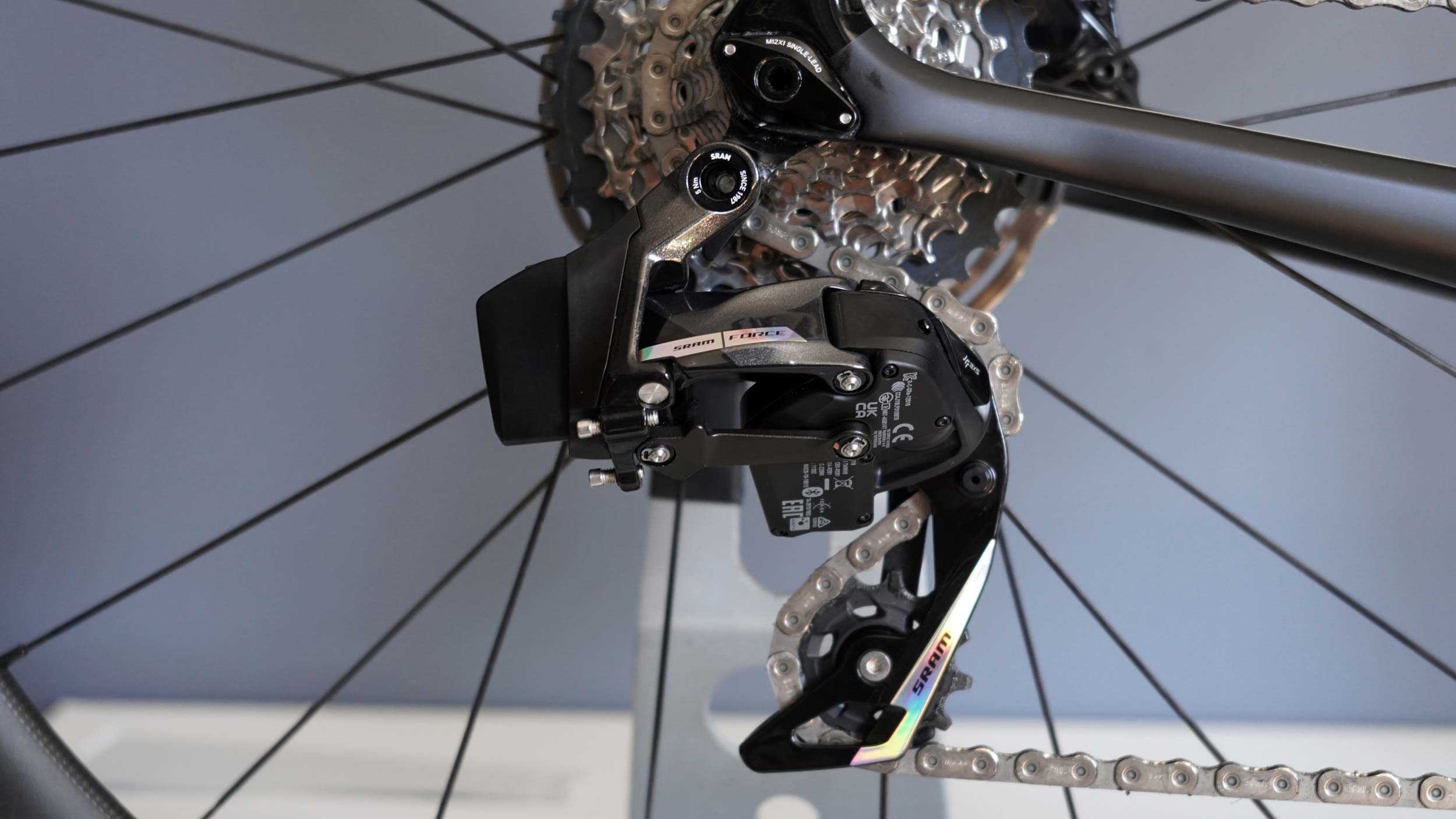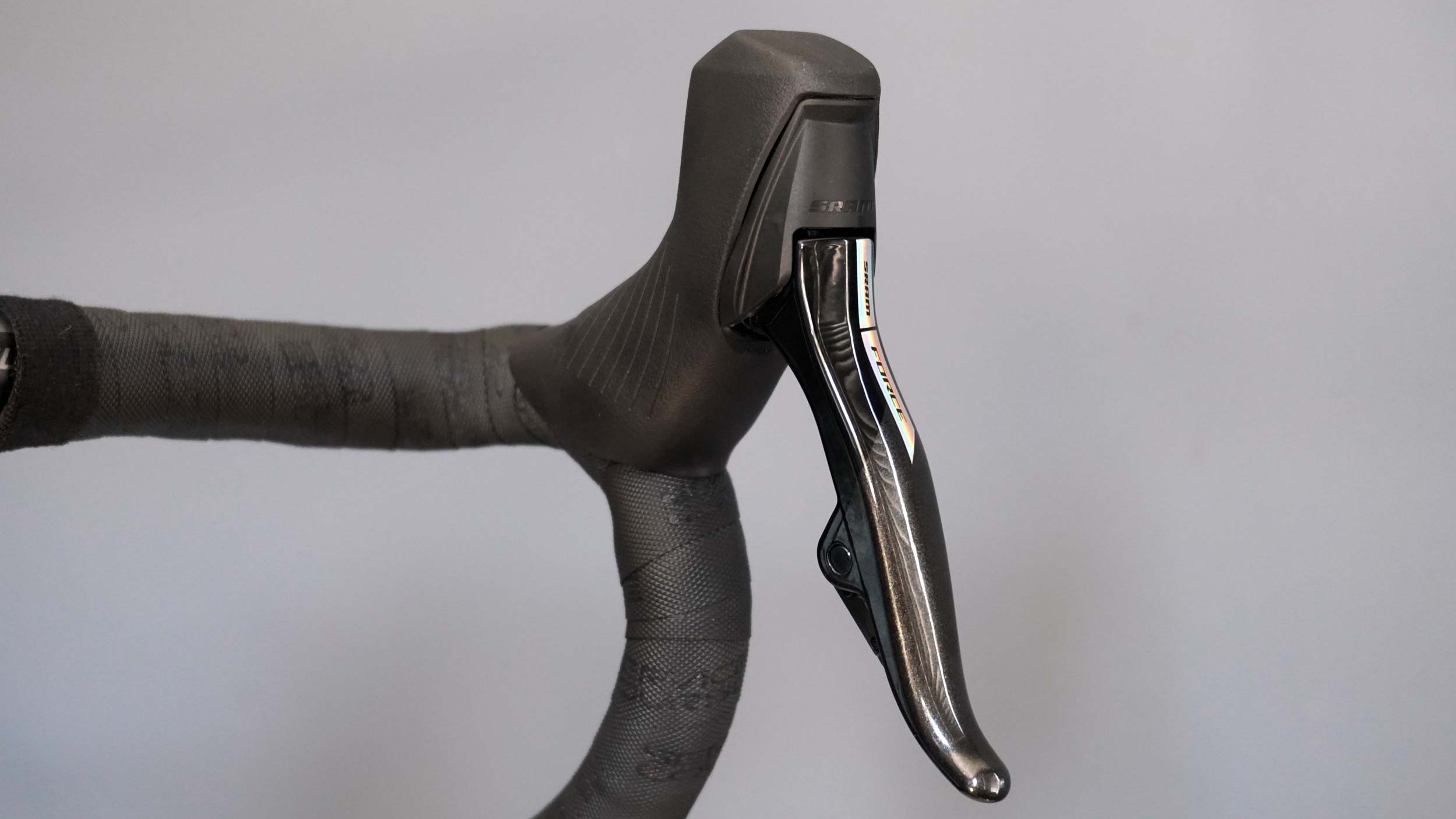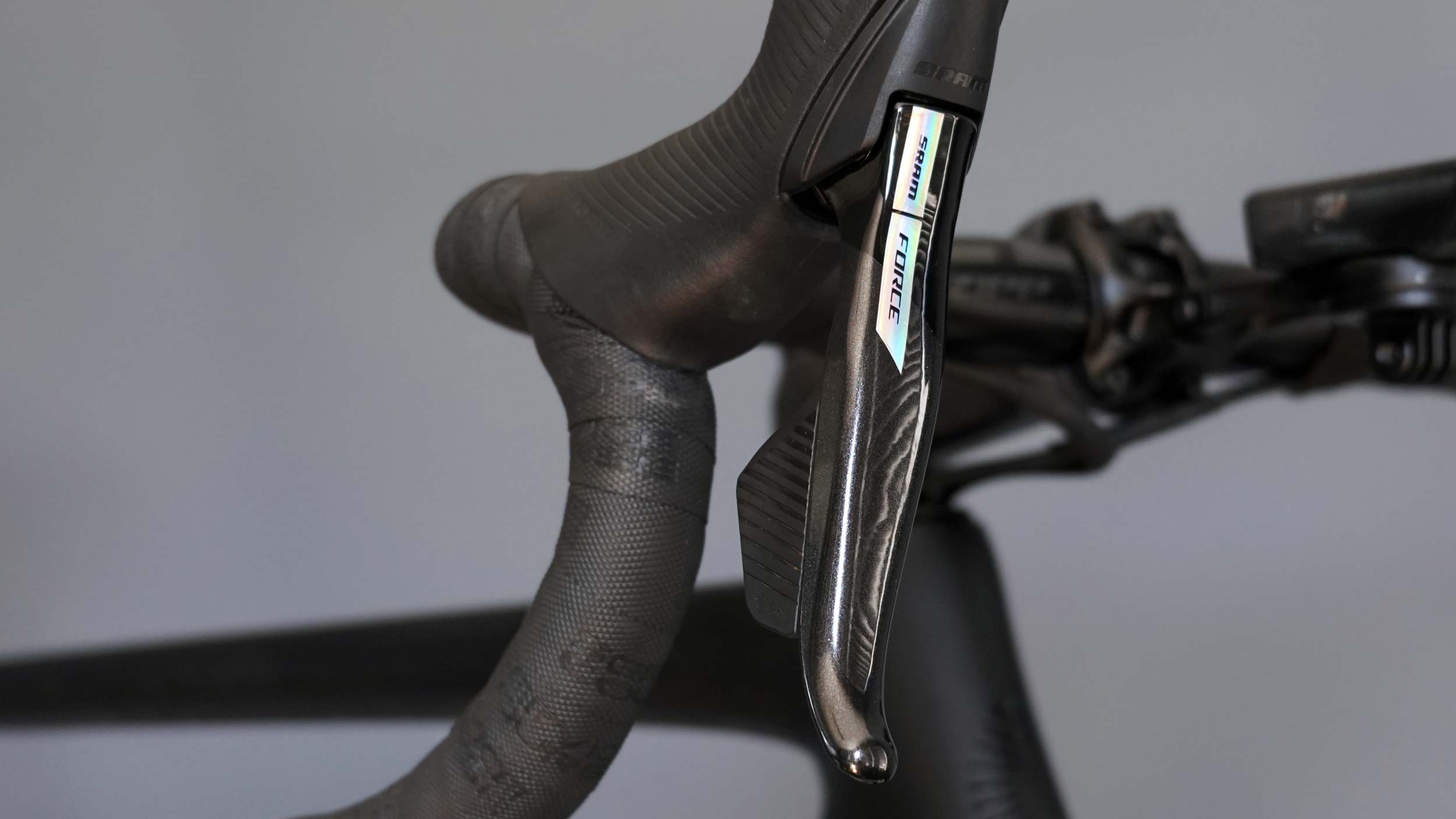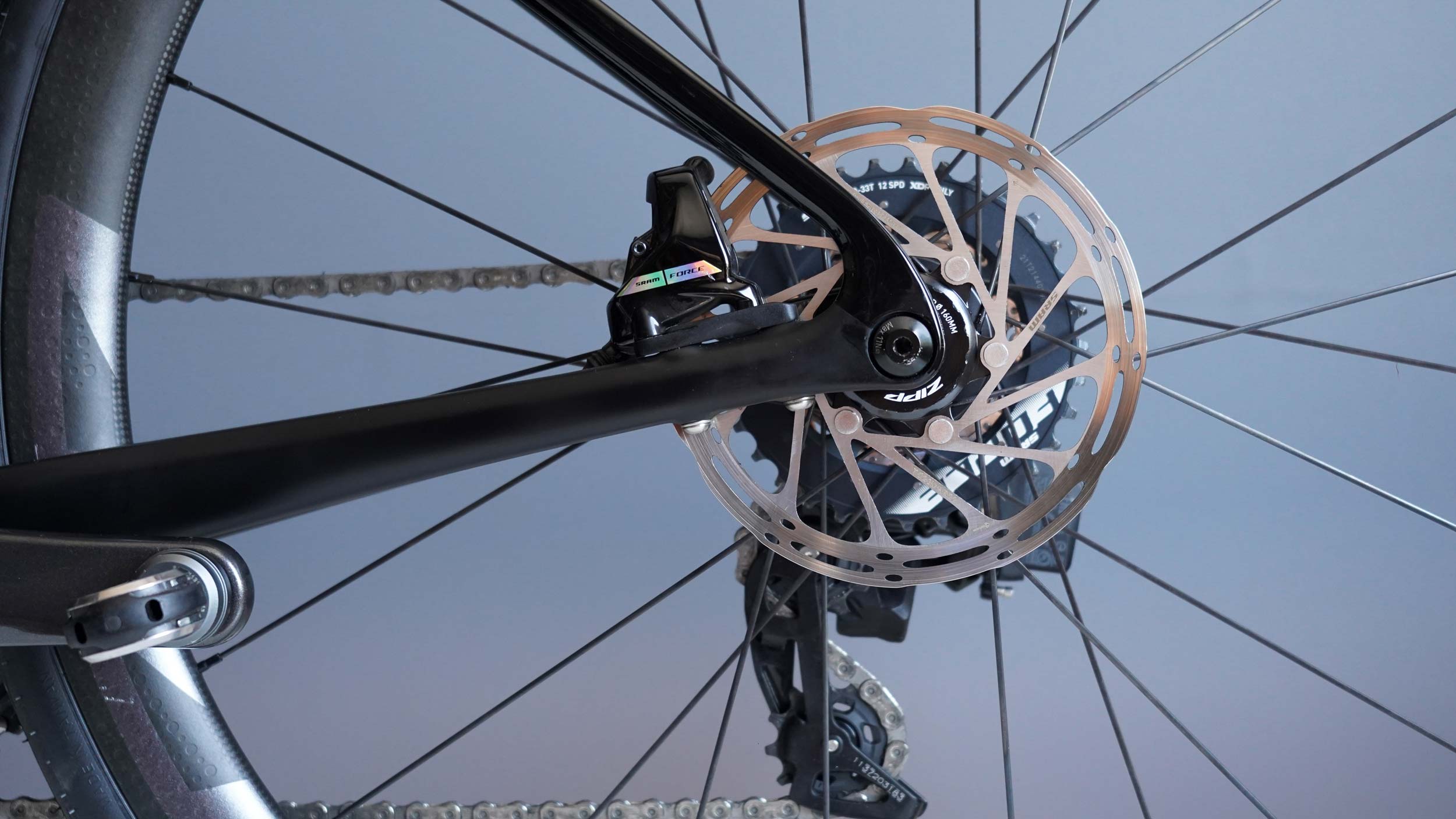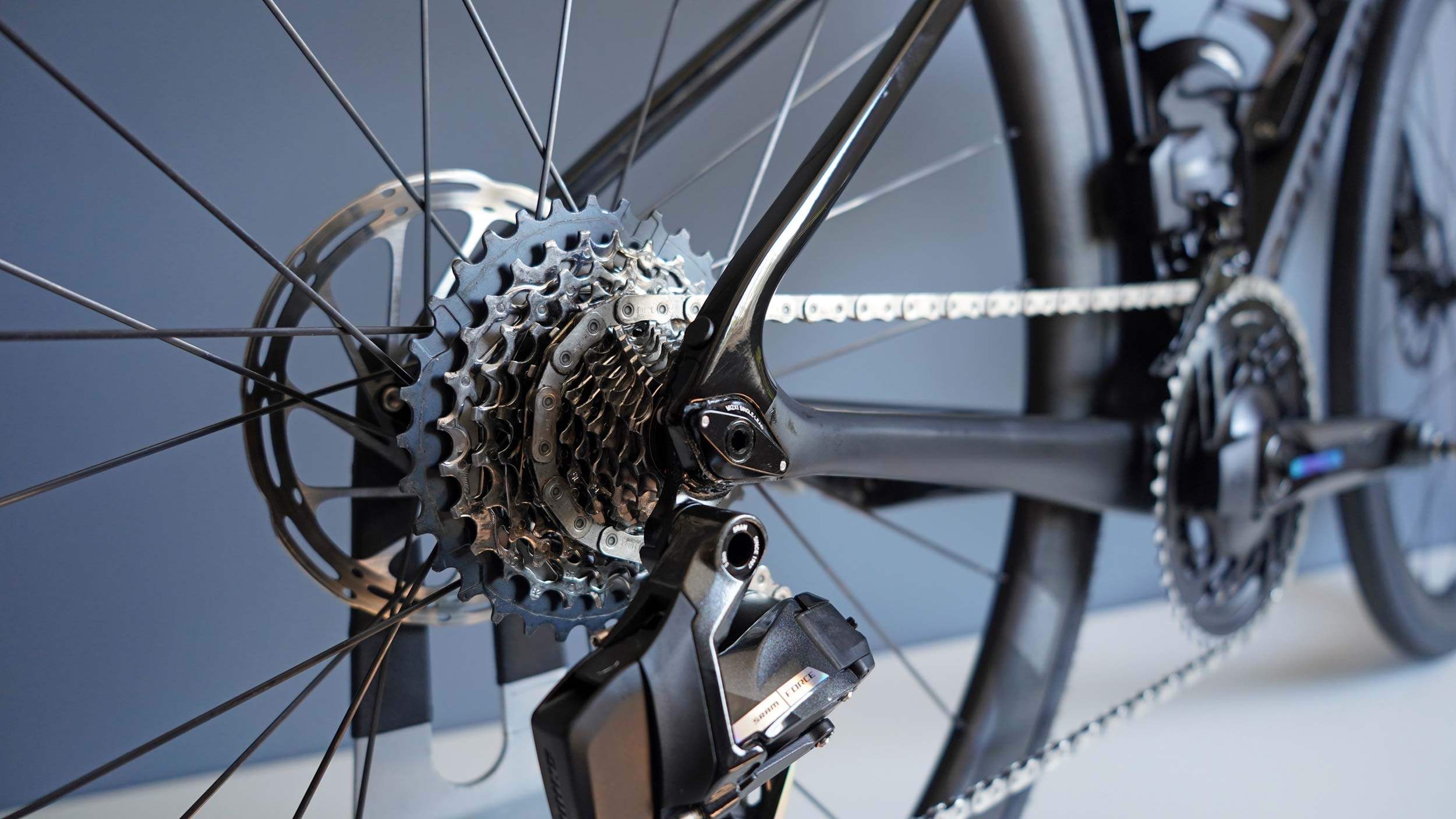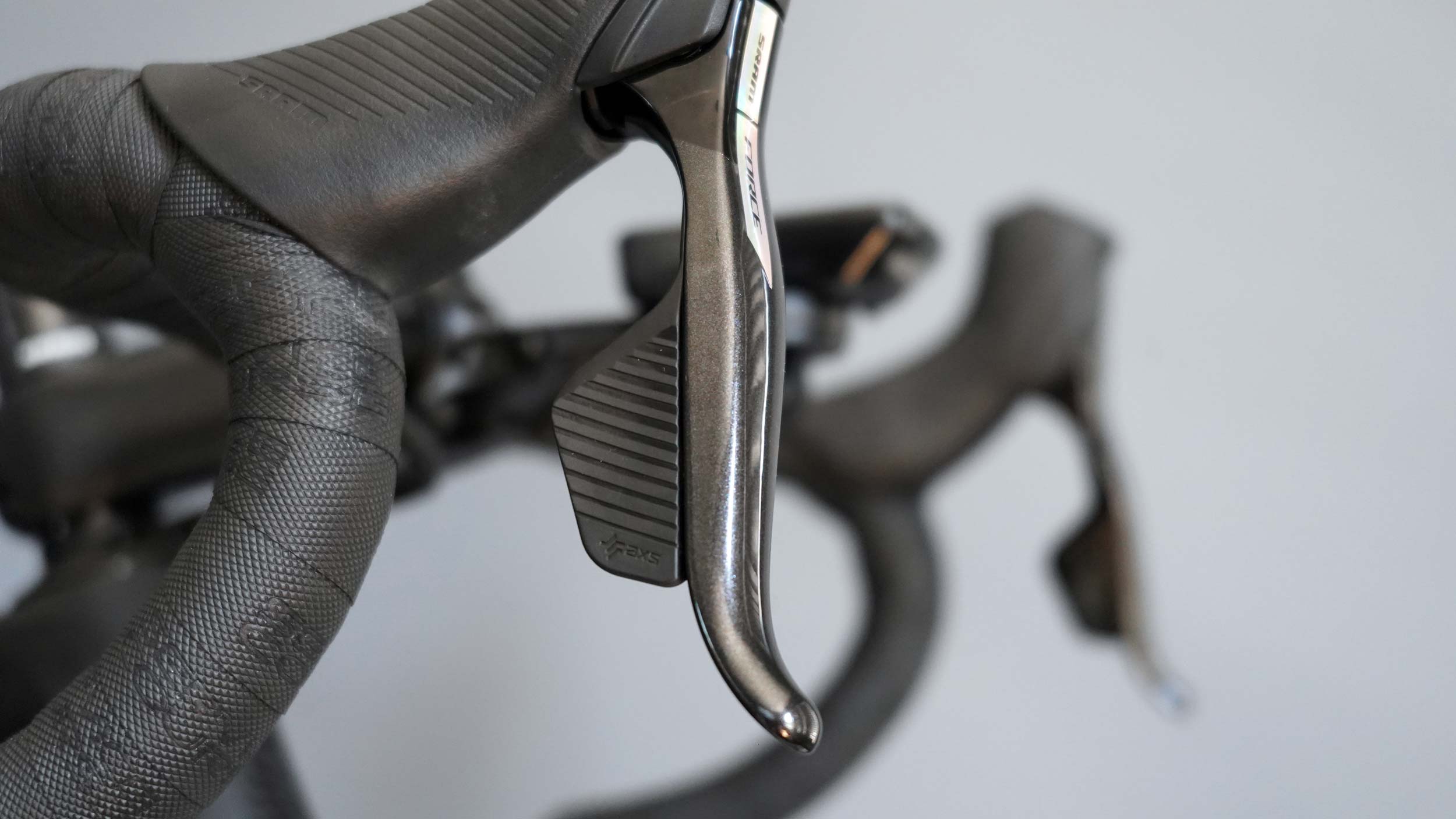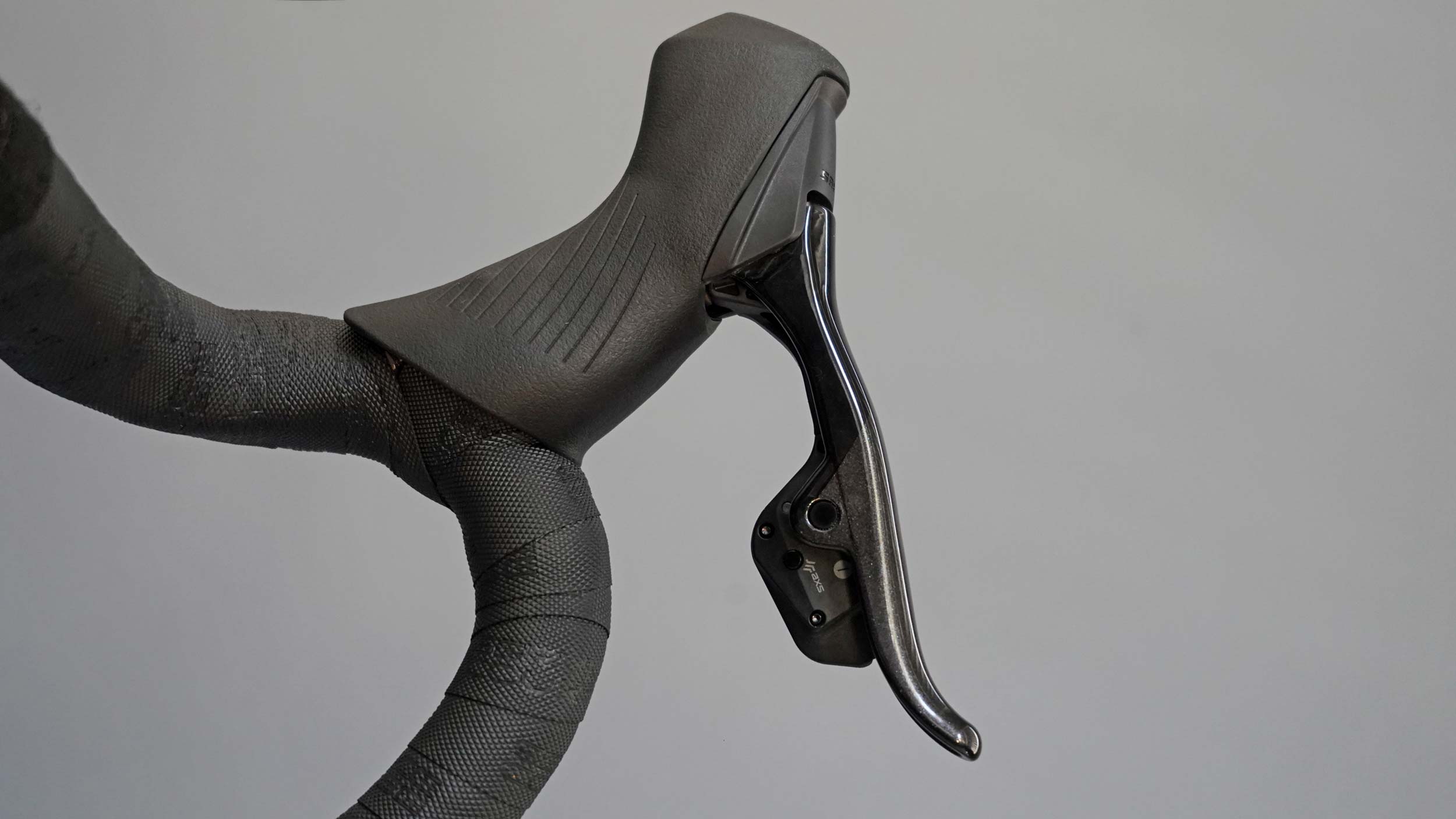Originally released in 2019, SRAM’s second-in-line wireless groupset offering, Force AXS, has been significantly tweaked. It was relaunched globally today and is said to be available now.
We take a quick spin on Cannondale’s new Lab71 SuperSix Evo bike, fitted with the new SRAM Force AXS groupset… and, in part one of a series of reviews, get some tech details – and mechanic tips – from Lachlan McKillop.
– Part one of a series of reviews. By Rob Arnold)
The SRAM Force AXS groupset that was launched today is a significant reworking of the company’s second-tier offering. At the top of the road market product line from the US brand is Red which was the first wireless electronic-shifting on the market. When this innovation was unveiled, it came with an extra tagline: ‘eTap’.
When SRAM Red eTap’s second generation was launched, it came with another extra tagline: ‘AXS’ – pronounced, in SRAM-land, “axis”.
Once SRAM Red eTap AXS was on the market, it seemed obvious what would come next. And lo, in 2019, SRAM Force eTap AXS was born.
Never mind the naming protocol. It’s different again now, and this time SRAM is trimming letters from the packaging – and a little bit of weight from the groupset… but the big pitch for this relaunch isn’t about Force being lighter, or more aero, or more comfortable.
Instead, the message from SRAM seems to be about refinement.
What was a good second-tier groupset just got better. And as someone who has ridden with the first-generation of Force since its launch date almost four years ago, I’ve got plenty of experience with what came before this.
The selection of bikes I’ve been lucky enough to ride over the last 25 years is significant and often these have featured the top-of-the-line groupset offerings from SRAM, Shimano or Campagnolo. But when Force AXS eTap came out, it proved to be more than enough for the riding I do.
Actually, it proved to be a fantastically reliable groupset, one that I have kept on my personal bike since 2019… and continue to use in 2023. And I still love it. Of course, there have been numerous times when I’ve cursed a skipped gear change, or a dropped chain, or flat batteries.
These things happen in modern cycling. But, as you’d expect, with each new release the reliability and functionality also improves.
The ‘eTap’ tag is gone, trimmed out of SRAM parlance in 2023 as part of a new approach to the groupset range.
And when SRAM reps are asked to summarise what’s different about the New Force vs the Old Force, it has been surprising how many times I’ve been told about the naming protocol changes.
Interestingly, it was only late in the launch that a weight chart was issued and comparisons offered, as the slight reductions – mainly in the reconfigured crankset (ie. 752 grams vs 835 grams with a 2x 48/35 chainring combo), but also elsewhere – aren’t part of the key selling point.
What SRAM seems to want to push is how this groupset is simply more efficient. Oh, they might add (with genuine enthusiasm), the new Force also looks better. Let’s also be sure to mention how much quieter it is – for this is something that the company really ought to be proud about.
Shifting is crisp and quiet. And although there is a lot more to say, the finer details will emerge after I’ve spent more time riding with SRAM’s Force AXS (ie. the newer version, with the abbreviated name).
Click play on the video at the top of this page and listen to my very early thoughts on what the new Force is like to ride. You will also hear from SRAM’s ‘Technical Content Specialist’, Lachlan McKillop, as he answers a few questions at the turnaround point of a short ride on the day I was invited to first sample the 2023 iteration of Force.
By chance, we happen to cover some of the key differences of Old vs New: the revamped front derailleur, the lack of AUX ports in the levers (and the ability to connect satellite shifter buttons wirelessly), and the new configuration of the cranks and power meter.
Lachlan also talks through some set-up tips to help mechanics and users alike better understand how to ensure that the shifting is as smooth as it can be.
There is a lot of cicada song in the background, but Lachlan still highlights the key features of the new groupset, including the fact that this is not a trickle-down scenario where features of Red are passed on to Force. Instead, SRAM has opted to revamp the second-tier offering before the top-tier (we can assume) and there is a lot of logic in that approach.
Although SRAM would love it if everyone bought Red instead, the dramatic jump in price means that this isn’t likely, certainly not in 2023 when inflation is rife. So, it makes sense that the first major launch from SRAM in post-pandemic times is for Force.
The full pricing structure is complicated as there are many components and variations but the rough overview is that a Force groupset will retail in Australia for between AUD$3,412 and AUD$4,396.
Select your preference and decide if you want a power meter or not, and the basic breakdown is as follows:
- SRAM Force AXS – 1x: AUD$3,412
- SRAM Force AXS – 1x (with power): AUD$3,994
- SRAM Force AXS – 2x: AUD$3,778
- SRAM Force AXS – 2x (with power): AUD$4,396
The Force levers (above) are now carbon-fibre and feature the ‘laser foil’ finish on the branding. The shift paddle is slightly larger, essentially mimicking the Rival groupset (released with wireless shifting in 2021), and features a different textured finish to the previous iteration.
The look of the hoods also borrows from the Rival offerings, and there are subtle changes to the grip. It takes only a few minutes to adjust to the new sensations and although the touch-points are what many consider when making their purchasing decision, the ergonomics from SRAM, Shimano and Campagnolo in 2023 are all excellent.
You may have a preference for one over the other, but the extra bulk that came with hydraulics has actually made hoods and levers far more functional than before when there seemed a curious quest to keep things as small as possible.
I’ll expand on some observations as this review progresses but for now, it’s still early days and I’ll let the pictures – and video… and Lachlan – tell the story in this post. There is more to come about the Force groupset and the Cannondale bike that I have to ride for another couple of weeks.
There were some slight adjustments made since that first ride (featured in the video) and I’ll explain the changes in the coming days while also getting some opinions from the workshop when we examine the products in more detail.
It has been a while since SRAM released a new road groupset and while there’s a lot to consider, the changes are relatively subtle – both on cosmetic and structural levels – but the improvements are noticeable and appreciated.
The claims of quieter shifting are true. More efficient? Yep, I agree with that too. And what remains to be considered is longevity and market acceptance.
Force isn’t the top-tier offering and maybe there will be some major overhauls when Red gets revamped but for now SRAM has taken a smart approach by refining a groupset that more riders will be able to afford.
This new groupset isn’t cheap but it will feature on a lot of bikes in the coming months. It was launch day at the start of March, but it won’t be long before you see it everywhere. It should stand out in a crowd, certainly more than the previous Force groupset did, as the finish is spectacular and the laser foil catches the light in style.
Please note, however, you might not hear it coming… as it is the quietest drivetrain I’ve used. And I’m curious to see how long that lovely silence lasts. I’ll keep you posted as this test progresses.
– By Rob Arnold


